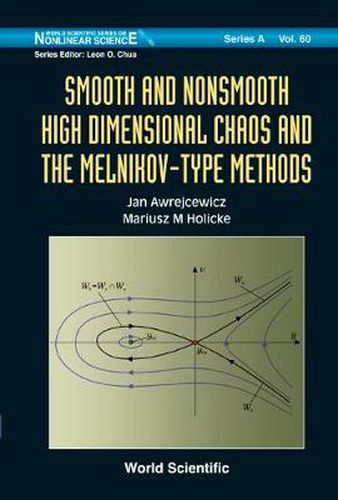Readings Newsletter
Become a Readings Member to make your shopping experience even easier.
Sign in or sign up for free!
You’re not far away from qualifying for FREE standard shipping within Australia
You’ve qualified for FREE standard shipping within Australia
The cart is loading…






This book focuses on the development of Melnikov-type methods applied to high dimensional dynamical systems governed by ordinary differential equations. Although the classical Melnikov’s technique has found various applications in predicting homoclinic intersections, it is devoted only to the analysis of three-dimensional systems (in the case of mechanics, they represent one-degree-of-freedom nonautonomous systems). This book extends the classical Melnikov’s approach to the study of high dimensional dynamical systems, and uses simple models of dry friction to analytically predict the occurrence of both stick-slip and slip-slip chaotic orbits, research which is very rarely reported in the existing literature even on one-degree-of-freedom nonautonomous dynamics.This pioneering attempt to predict the occurrence of deterministic chaos of nonlinear dynamical systems will attract many researchers including applied mathematicians, physicists, as well as practicing engineers. Analytical formulas are explicitly formulated step-by-step, even attracting potential readers without a rigorous mathematical background.
$9.00 standard shipping within Australia
FREE standard shipping within Australia for orders over $100.00
Express & International shipping calculated at checkout
This book focuses on the development of Melnikov-type methods applied to high dimensional dynamical systems governed by ordinary differential equations. Although the classical Melnikov’s technique has found various applications in predicting homoclinic intersections, it is devoted only to the analysis of three-dimensional systems (in the case of mechanics, they represent one-degree-of-freedom nonautonomous systems). This book extends the classical Melnikov’s approach to the study of high dimensional dynamical systems, and uses simple models of dry friction to analytically predict the occurrence of both stick-slip and slip-slip chaotic orbits, research which is very rarely reported in the existing literature even on one-degree-of-freedom nonautonomous dynamics.This pioneering attempt to predict the occurrence of deterministic chaos of nonlinear dynamical systems will attract many researchers including applied mathematicians, physicists, as well as practicing engineers. Analytical formulas are explicitly formulated step-by-step, even attracting potential readers without a rigorous mathematical background.